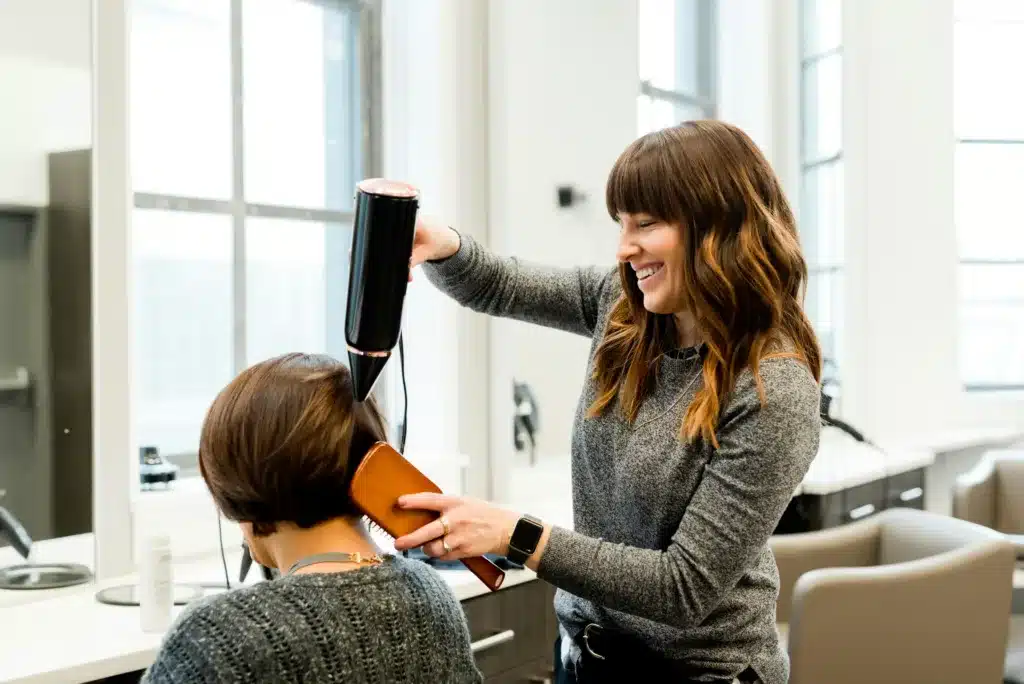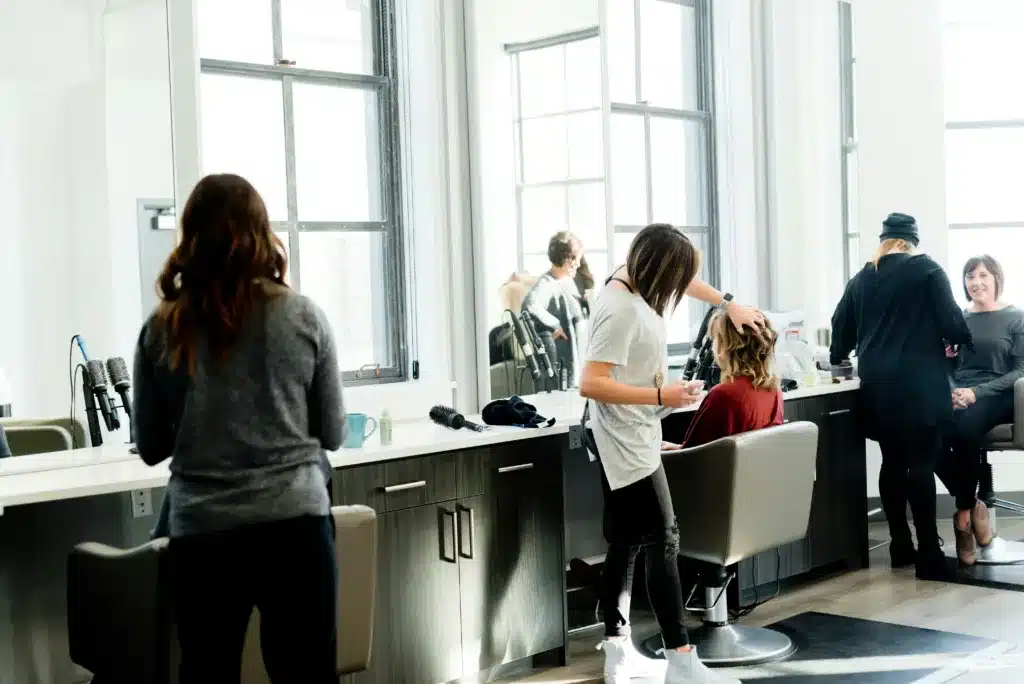

Commercial Director James leads Account Management, Sales and Marketing at Neathouse Partners.
22 January 2024
16 September 2024

Whether you are a beautician, hairdresser, barber or the manager of a beauty empire, it is important to comply with health and safety laws and to be aware of some of the most common hazards in a hair and beauty salon. The Health and Safety at Work Act 1974 is the primary legislation for businesses across England, Scotland and Wales. There are various regulations under this Act that also need to be adhered to, such as the Management of Health and Safety at Work Regulations 1999, which state the requirement to carry out risk assessments.
Regardless of the size of your salon and the number of employees you have, you will need to make sure your business is compliant. Overlooking important health and safety legislation can put staff and customers at risk. It can also put your business at risk of enforcement action if you are to be found in breach of the law. In the case of a conviction, Magistrates’ Courts can issue fines, and serious cases can mean custodial sentences. In terms of legal requirements, the health and safety of staff should be ensured at all times in a hair and beauty salon via compliance with the Health and Safety at Work Act 1974. Clean and hygienic facilities should be maintained, with drinking water, clean toilets, changing areas and first aid all available. Customers and staff should be protected from hazards and risks at all times. The person who is legally responsible for health and safety could be a manager, supervisor, salon owner, building landlord, or an external party such as a health and safety compliance adviser. Salon owners aren't just responsible for the health and safety of their employees – they're also responsible for customers. Although hair and beauty salons are designed to be relaxing environments, they do have hazards that can cause accidents, long term health issues and physical harm. Many hair and beauty salons use chemicals, sharp objects, and equipment that poses a fire risk (such as hair straighteners).

Statistics show that hairdressers are seven times more likely to have accidents at work than manual trades. According to a 2020 blog from Insurance Choice, up to 70% of hairdressers have skin damage of some kind due to being exposed to chemicals in hair products, as well as damage caused by washing and drying hair and prolonged washing of the hands. The European Agency for Safety and Health at Work has also stated that hairdressers are five times more likely to have musculoskeletal disorders.
Appropriate measures should be put in place to prevent any of the following from occurring and to stop any harm that may happen as a result.
People who work in beauty salons often have more likelihood of developing musculoskeletal problems because of the time spent standing, bending over at basins to wash hair and so on. Health and safety managers should ensure that staff are taking frequent breaks, and that there is access to ergonomic seating.
Hairdressers and beauty technicians spend a lot of time coming into contact with water and other chemicals. As a result, their skin can become dry, crack, peel, and rashes or allergic reactions can occur. If a hairdresser or beauty technician is using certain products all day, such as nail glue, it can cause major skin irritation. Gloves should be provided to protect the skin.
Clients and customers are both at risk of developing Legionnaires' disease is there is a risk of a contaminated water supply. Heath and safety inspectors should assess the salon's water supply to ensure that it is safe and that legionnaire bacteria isn't present.
Inhaling chemicals such as nail polish vapours, bleach and hair dye chemicals regularly could cause breathing problems for staff. Salons and beauty premises should be well-ventilated, and employees should be trained on how to safely use strongly-smelling chemicals and products such as nail varnish and hairspray without breathing in excess fumes. Employees should also be encouraged to wear face masks. Salons also frequently use flammable chemicals like nail polish, and must comply with COSHH(Control of Substances Hazardous to Health Regulations 2002) legislation.
Floors can be very hazardous in beauty and hair salons. Liquid products and water can spill and splash onto the floor, causing major slipping hazards. If staff leave equipment lying around or cables trailing on the floor, this can cause trip hazards, too. Loose plugs and wires can cause electrical hazards because of the risk of shock if they come into contact with water. 'Wet floor' signs should clearly be positioned when a spillage occurs until it is properly cleaned up. Ideally, a salon should foster a culture of cleaning up spills as soon as they occur.
Tools such as hair curlers and straighteners can pose a fire risk if they are left switched on and unattended. There must be a sufficient number of fire exits on the premises and a fire risk assessment should be routinely conducted.
If a salon isn't properly cleaned, and tools aren't properly disinfected between customers, this can cause harmful bacteria to spread. Chairs should be wiped down after each use and salon tools should be properly cleaned after each use. Employees must also maintain good personal hygiene with frequent hand washing.

Neathouse Partners can assist with creating a robust health and safety policy for your business. A health and safety policy for a hair and/or beauty business should state key aims for the business, and note who is legally responsible, including the names and roles of designated responsible person(s). The policy should also state how health and safety is ensured and managed on the premises, which includes the following.
Members of staff should receive sufficient health and safety training that applies to their roles. Ongoing training should be implemented, with guidelines on how often re-training is to be undertaken.
Every member of staff in the salon should know that they are responsible for their own and their clients' health and safety. A health and safety policy should outline the expectations of staff behaviour when they are working on the premises.
A health and safety policy should outline the key hazards in a hair and beauty salon environment, how to prevent and address them, and how to conduct a risk assessment. Particular care should be taken to address spills and trips, electrical and fire hazards, and risks that occur as a result of handling chemicals.
There are significant fire risks in a beauty salon, and a health and safety policy should outline them, including how they could be caused, and steps for prevention. Fire safety procedures should be covered, too.
Any accidents, injuries or illnesses must be logged in an accident report book. Digital files of all accidents should be easily accessible for reference. Staff should be trained in how to report an accident if it happens.
A health and safety policy should indicate which members of staff are trained to give first aid, where first aid equipment can be found on-site, how often medical stock should be replaced, and what the general first aid procedure is.
Our team of professionals at Neathouse Partners can advise on how to stay compliant with current safety legislation and create documents or templates for your health and safety policy. Our team of HR consultants and employment lawyers can help you navigate the process to ensure that your staff and business are protected and safe. Call 0333 041 1094 today or use our contact form.